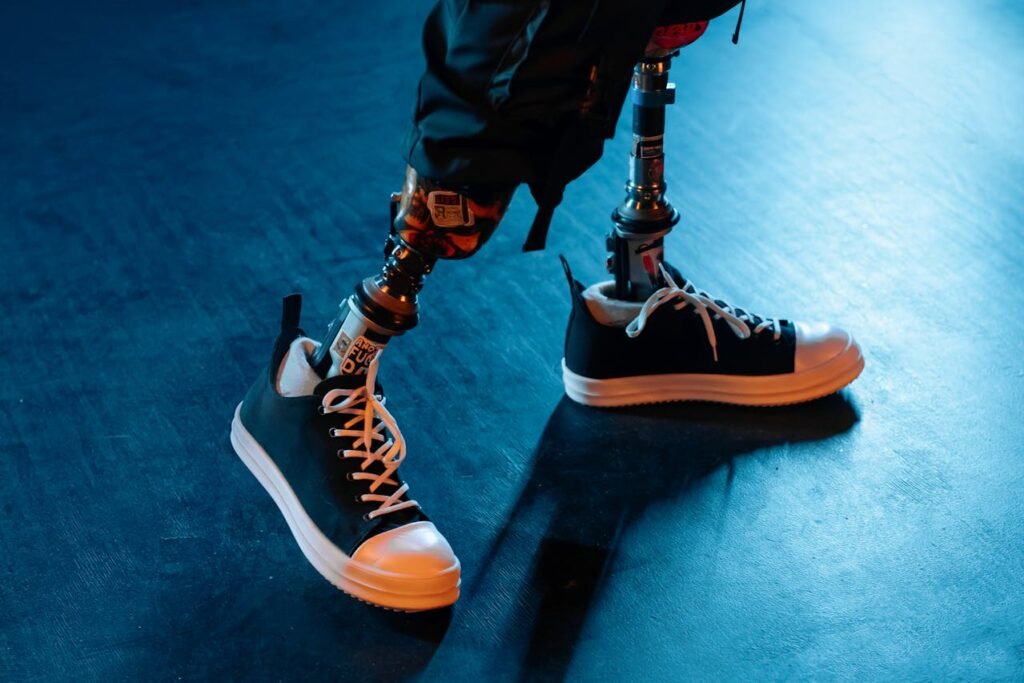Prosthetics have long been viewed through a functional lens, designed to restore mobility and independence for individuals with limb loss. While their practical value is undeniable, this approach often overlooked an essential aspect of human identity: self-expression. Enter fashion-forward prosthetics—a revolutionary concept that challenges stereotypes and transforms assistive devices into statements of style, creativity, and individuality.
Fashion-forward prosthetics go beyond functionality, empowering users to embrace their uniqueness and redefine societal perceptions of disability. These devices celebrate the blend of art and engineering, offering not only enhanced performance but also opportunities for personal and artistic expression.
The Evolution of Prosthetics: From Function to Fashion
Prosthetics have come a long way from their utilitarian origins. Early designs focused primarily on restoring basic functionality, often at the expense of comfort and aesthetics. Heavy materials, limited customization options, and a clinical appearance defined the standard for decades.
A Shift in Mindset
The rise of fashion-forward prosthetics reflects a broader cultural shift toward inclusivity and empowerment. No longer confined to the realm of medical devices, prosthetics are now being embraced as tools of self-expression.
This transformation has been driven in part by users who demand more than just utility—they want devices that reflect their personality and style.
For instance, a prosthetic leg adorned with intricate patterns or vibrant colors can become a conversation starter, turning what was once a source of stigma into a symbol of pride.
Similarly, prosthetic arms with sleek, futuristic designs can embody strength and innovation, challenging outdated notions of disability.
For businesses, recognizing and responding to this demand is essential. By offering customizable options and collaborating with designers, companies can cater to users seeking prosthetics that go beyond functionality to celebrate individuality.
The Intersection of Fashion and Technology
Fashion-forward prosthetics represent the perfect marriage of design and innovation. These devices combine cutting-edge materials and technologies with artistic craftsmanship to create products that are as beautiful as they are functional.
Advanced Materials for Style and Comfort
The materials used in modern prosthetics play a crucial role in achieving both style and functionality. Lightweight composites, flexible polymers, and 3D-printed components allow for intricate designs without sacrificing durability or comfort. These advancements enable users to explore a wide range of aesthetics, from minimalist and elegant to bold and avant-garde.
For example, carbon fiber—a material known for its strength and lightness—has become a popular choice for prosthetic limbs. Its sleek appearance and ability to be molded into unique shapes make it ideal for users who want a contemporary look.
Meanwhile, silicone and thermoplastic materials offer a softer, more natural finish, catering to those who prefer a discreet design.
For manufacturers, investing in innovative materials and production techniques can set their products apart in a competitive market. Collaborating with material scientists and designers ensures that prosthetics meet both technical and aesthetic standards.

Personalization Through 3D Printing
3D printing has revolutionized the customization process, allowing prosthetics to be tailored to each user’s preferences and measurements. This technology enables the creation of intricate patterns, textures, and finishes that were previously impossible to achieve with traditional manufacturing methods.
For instance, a user might choose a prosthetic arm with geometric patterns inspired by their favorite art movement or a leg cover that mimics the scales of a mythical creature. With 3D printing, the possibilities are virtually limitless, empowering users to design prosthetics that feel uniquely theirs.
For businesses, integrating 3D printing into their production processes can enhance customer satisfaction while reducing lead times and costs. Offering digital design tools or partnerships with artists further expands customization options, ensuring that each prosthetic tells a story.
Breaking Barriers in Representation
Fashion-forward prosthetics are not just about aesthetics—they are also reshaping the way society views disability. By challenging stereotypes and celebrating diversity, these devices play a vital role in fostering inclusivity and representation.
Redefining Beauty Standards
For too long, societal beauty standards excluded individuals with disabilities, perpetuating narrow definitions of perfection. Fashion-forward prosthetics challenge this narrative, showcasing the beauty of difference and redefining what it means to be stylish.
Runway shows, advertising campaigns, and social media platforms now feature models and influencers proudly displaying their prosthetics, sending a powerful message of acceptance and empowerment.
These moments are not just milestones for the individuals involved—they also inspire others to embrace their uniqueness and demand visibility.
For businesses, partnering with models, influencers, and public figures who use prosthetics can amplify this message while showcasing their products in real-world contexts.
Highlighting the stories of users who embody confidence and creativity creates an emotional connection with audiences, fostering brand loyalty and trust.
Empowering Users Through Customization
Fashion-forward prosthetics empower users to embrace their individuality and take control of their narrative. Customization plays a central role in this process, allowing individuals to design prosthetics that resonate with their personal style, interests, and cultural identity.
Collaborating with Artists and Designers
One of the most exciting trends in fashion-forward prosthetics is the collaboration between manufacturers and artists or fashion designers. These partnerships result in prosthetics that blur the line between medical devices and wearable art.
By infusing prosthetics with artistic elements, users can transform their devices into powerful statements of self-expression.
For example, a prosthetic arm designed in collaboration with a graffiti artist might feature bold, urban-inspired graphics, while a leg cover created by a fashion designer could incorporate high-end fabrics or jewel-like embellishments.
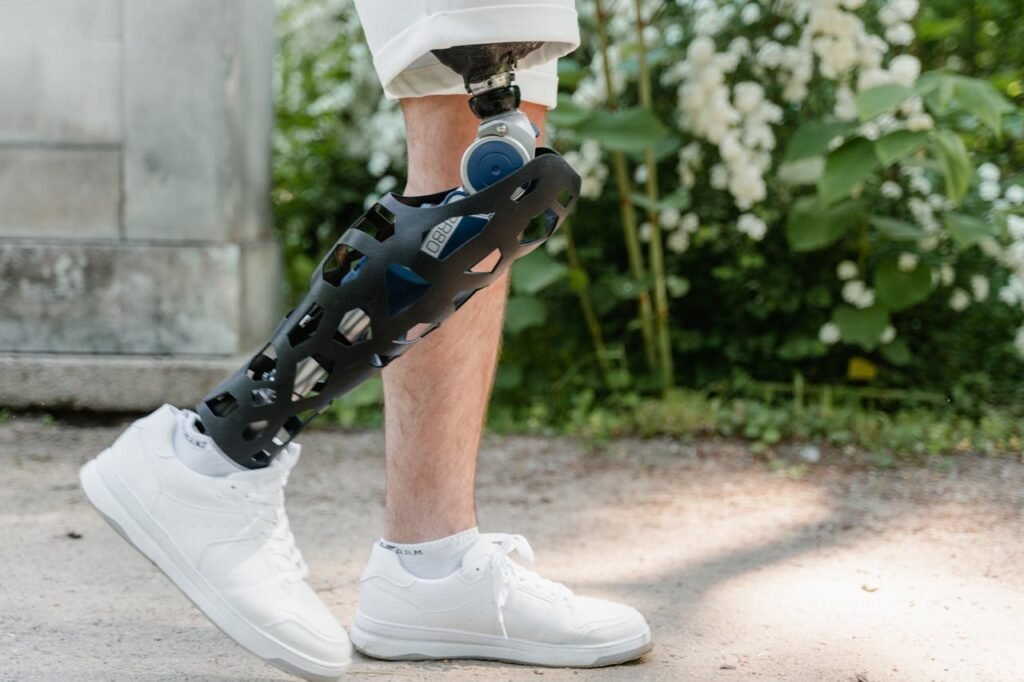
These collaborations not only elevate the aesthetic appeal of prosthetics but also make them conversation starters that challenge societal perceptions of disability.
Businesses can capitalize on this trend by forging partnerships with designers, offering limited-edition collections, or hosting design contests that invite users to co-create their prosthetics. Such initiatives demonstrate a commitment to innovation and inclusivity while fostering a sense of community among users.
Celebrating Cultural Identity
Prosthetics can also serve as a canvas for celebrating cultural heritage. Patterns, colors, and symbols inspired by traditional art forms or regional aesthetics allow users to honor their roots while making a bold fashion statement.
For instance, a prosthetic leg adorned with intricate Indian henna-inspired designs or African tribal patterns not only highlights cultural pride but also sparks meaningful conversations. Businesses that incorporate culturally significant elements into their designs can appeal to diverse audiences and strengthen their global presence.
To succeed in this area, companies must prioritize collaboration with cultural experts and communities to ensure authenticity and respect. By celebrating diversity through design, businesses can position themselves as leaders in inclusivity and representation.
Advancing Inclusivity Through Technology
The integration of advanced technology with fashion-forward prosthetics is not just about aesthetics—it’s also about accessibility and functionality. These innovations ensure that prosthetics remain practical while embracing style, empowering users to live confidently and independently.
Smart Features for Modern Lifestyles
Smart prosthetics equipped with sensors, microprocessors, and connectivity options are revolutionizing the user experience. These devices offer real-time feedback, intuitive controls, and personalized settings that adapt to each user’s needs.
When combined with fashion-forward designs, smart prosthetics seamlessly integrate into modern lifestyles.
For example, a prosthetic hand with a sleek, futuristic design might feature touch-sensitive grips that allow the user to perform delicate tasks like holding a glass of water or typing on a keyboard.
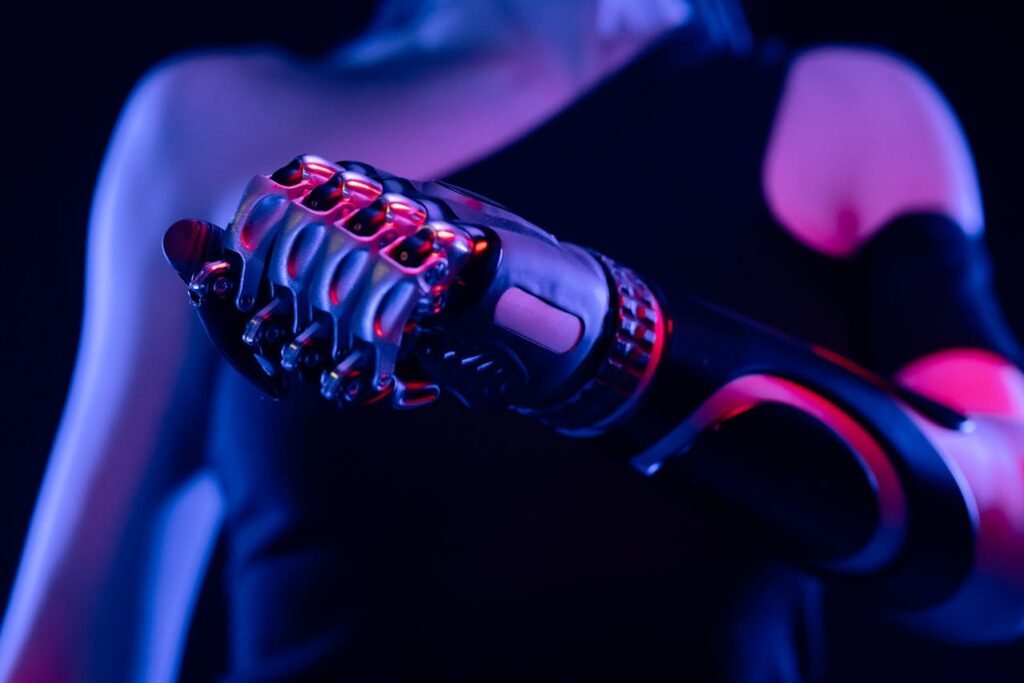
Similarly, a leg prosthetic with built-in accelerometers and gyroscopes could offer enhanced balance and stability, making it ideal for active users.
Businesses can stay ahead by investing in R&D to incorporate smart technologies into their designs. Offering companion apps that allow users to customize settings or track performance enhances the functionality and appeal of their products.
Lightweight and Durable Materials
For fashion-forward prosthetics to succeed, they must balance style with practicality. Lightweight materials such as carbon fiber and thermoplastics ensure that prosthetics remain comfortable for daily use, while advanced coatings and finishes enhance durability.
These materials also enable bold and intricate designs without adding unnecessary weight or compromising performance. For instance, a user might choose a prosthetic arm with a polished metallic finish that mimics high-end jewelry, or a leg cover with a matte texture for a sleek, modern look.
Businesses that prioritize material innovation can deliver products that meet both functional and aesthetic expectations, setting themselves apart in the competitive prosthetics market.
Inspiring Confidence and Empowerment
Fashion-forward prosthetics do more than enhance appearances—they inspire confidence and empower users to embrace their uniqueness. By challenging stereotypes and celebrating individuality, these devices create a ripple effect that extends far beyond the wearer.
Building Community and Representation
The visibility of fashion-forward prosthetics has sparked a growing sense of community among users, who find inspiration and solidarity in seeing others embrace their devices as symbols of strength and style.
Social media platforms have become powerful tools for showcasing these stories, fostering connections, and amplifying the voices of individuals with limb differences.
Businesses can play a key role in this movement by creating campaigns that highlight real users and their journeys. Featuring diverse voices and experiences in marketing materials not only builds authenticity but also encourages a broader audience to see prosthetics in a new light.
Driving Innovation Through Collaboration
The rise of fashion-forward prosthetics has opened up new avenues for collaboration across industries. By bringing together engineers, designers, artists, and users, businesses can create devices that are not only functional but also deeply personal and culturally relevant. This multidisciplinary approach is key to driving innovation and redefining the future of prosthetics.
Partnering with Fashion Brands
Collaborations with established fashion brands offer a unique opportunity to integrate high-end aesthetics into prosthetic design. By working with designers who specialize in luxury, streetwear, or avant-garde fashion, businesses can create limited-edition prosthetics that appeal to style-conscious users.
For example, a partnership with a sustainable fashion brand could lead to eco-friendly prosthetics made from recycled materials, combining style with environmental responsibility.
Similarly, working with haute couture designers might result in prosthetics that incorporate elegant fabrics, embroidery, or even gemstones, turning them into wearable art.
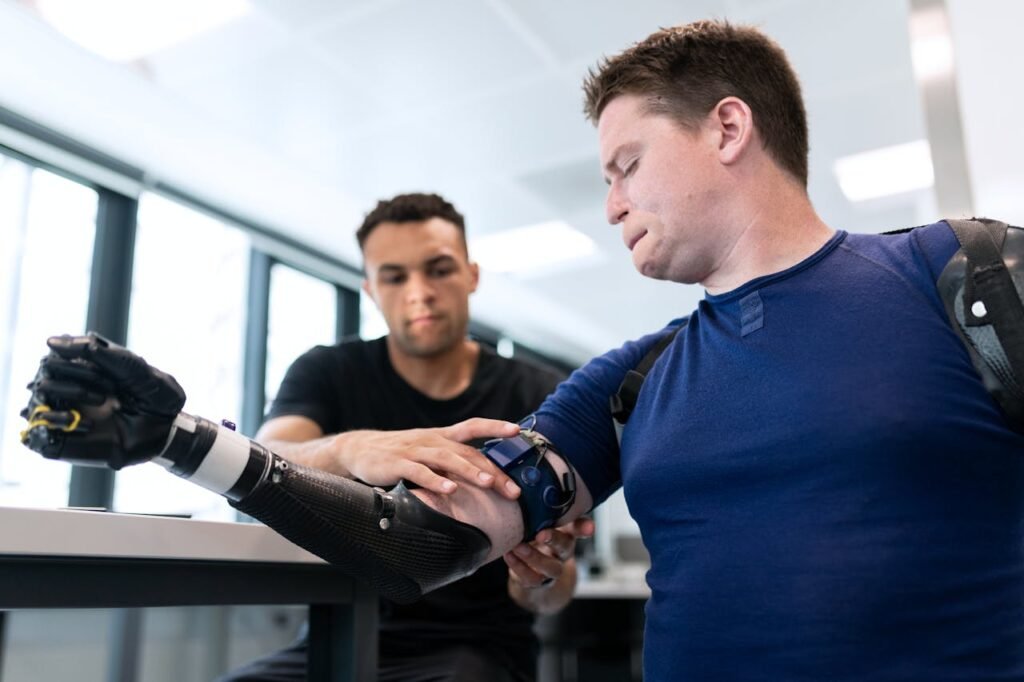
These collaborations not only elevate the aesthetic appeal of prosthetics but also position them as symbols of innovation and inclusivity in the broader fashion industry.
For businesses, co-branding opportunities can generate buzz and attract new customers, while reinforcing their commitment to breaking stereotypes.
Engaging the Tech Community
The integration of advanced technology into prosthetics has transformed what these devices can achieve. Partnering with tech companies and research institutions allows businesses to stay at the forefront of innovation, incorporating features like haptic feedback, neural integration, and AI-driven customization.
For instance, a prosthetic arm designed for musicians could include sensors that mimic the sensation of touch, enabling the user to feel the vibrations of their instrument.
Similarly, a leg prosthetic for athletes might feature smart shock absorption systems that adapt to different terrains in real time.
By leveraging technology, businesses can create prosthetics that enhance both performance and aesthetics, appealing to users who demand cutting-edge functionality.
Hosting hackathons, innovation challenges, or collaborative workshops can accelerate development and showcase the potential of these partnerships.
Expanding Accessibility and Affordability
While fashion-forward prosthetics have gained significant attention for their design and innovation, ensuring that they are accessible and affordable remains a critical challenge. Businesses that address these barriers can expand their reach and make a meaningful impact on the lives of more users.
Modular Design for Customization
One way to balance cost and personalization is by adopting modular design principles. Prosthetics can be developed with interchangeable components, allowing users to customize their devices based on their needs and preferences without purchasing an entirely new prosthetic.
For example, a user might select a base model with functional features, then add decorative covers, patterned finishes, or smart accessories over time. This approach ensures affordability while still providing opportunities for self-expression.
Businesses can enhance the appeal of modular designs by offering a wide range of options, from minimalist to statement-making aesthetics. Creating an online platform where users can visualize and order customized components further streamlines the experience.
Advocating for Insurance Coverage and Subsidies
The cost of prosthetics often remains a barrier for many users, particularly when it comes to advanced or fashion-forward designs. Businesses can play a proactive role by advocating for insurance coverage and government subsidies that support the inclusion of prosthetic customization and smart features.
Collaborating with nonprofits and advocacy groups to raise awareness about the importance of accessibility ensures that these devices reach those who need them most.
Additionally, offering flexible financing plans or partnerships with charitable organizations can make prosthetics more attainable for underserved communities.
Inspiring a Cultural Shift
Fashion-forward prosthetics are more than just devices—they are catalysts for a broader cultural shift that celebrates diversity, inclusion, and creativity. By challenging stereotypes and showcasing the beauty of individuality, these prosthetics are inspiring a new narrative around disability and design.
Amplifying User Stories
The most compelling ambassadors for fashion-forward prosthetics are the users themselves. Sharing their stories, experiences, and achievements highlights the transformative impact of these devices while fostering empathy and understanding among broader audiences.
For businesses, investing in storytelling initiatives—such as documentaries, social media campaigns, or live events—creates opportunities to connect with users on a personal level.
Featuring users from diverse backgrounds and professions ensures that the message of empowerment resonates across different communities.
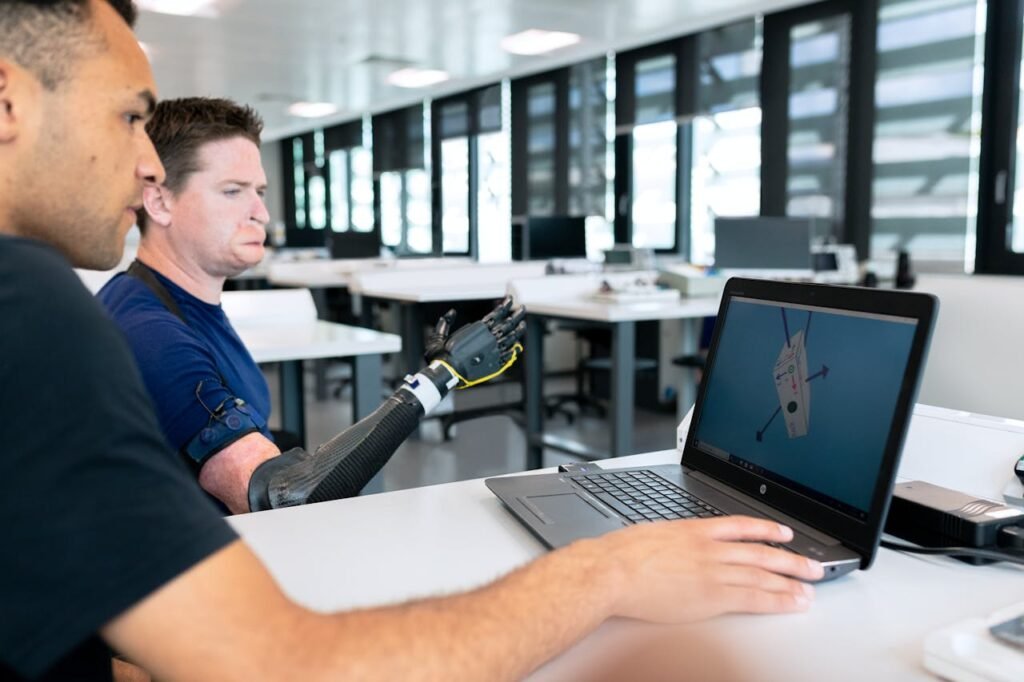
Creating a Legacy of Inclusivity
The success of fashion-forward prosthetics lies not just in their design but in their ability to create lasting change. By normalizing prosthetics as tools of empowerment and self-expression, businesses contribute to a more inclusive society where differences are celebrated.
This legacy extends beyond the products themselves. Companies that prioritize inclusivity in their hiring practices, partnerships, and marketing strategies set an example for other industries, demonstrating the value of embracing diversity at every level.
Paving the Way for Future Innovations
The growing popularity of fashion-forward prosthetics is only the beginning of a larger movement toward redefining assistive technology. The future holds immense potential for advancements that will further enhance the integration of fashion, technology, and accessibility in prosthetic design.
Exploring Sustainability in Prosthetic Design
As sustainability becomes a priority across industries, prosthetic manufacturers have an opportunity to lead the charge in creating eco-conscious solutions. Fashion-forward prosthetics can incorporate sustainable materials and manufacturing processes without compromising style or functionality.
For instance, recycled plastics, biodegradable polymers, or plant-based composites could be used to create prosthetic covers or components. Additionally, leveraging 3D printing technology can minimize waste while allowing for intricate, customizable designs.
Businesses that adopt sustainable practices can appeal to environmentally conscious consumers while aligning their products with broader societal values. Highlighting these efforts in branding and communication helps reinforce a commitment to innovation that benefits both users and the planet.
Bridging the Gap Between Fashion and Medicine
The fusion of fashion and prosthetic design offers an exciting opportunity to reframe how medical devices are perceived. By collaborating with medical professionals and designers, businesses can ensure that prosthetics meet rigorous functional standards while embracing the principles of aesthetic excellence.
For example, prosthetics designed for pediatric users could incorporate playful themes or vibrant colors, transforming the device into something children are proud to wear. Similarly, prosthetics for professional settings might feature elegant, understated designs that complement formal attire.
Bridging this gap requires a deep understanding of both medical requirements and user preferences. Businesses can gain a competitive edge by involving medical experts, users, and designers in the development process, ensuring that every product is both effective and inspiring.
Building a Community Around Fashion-Forward Prosthetics
Fashion-forward prosthetics are not just products—they are part of a larger movement that fosters connection and community among users. Businesses that actively engage with this community can build lasting relationships and create a loyal customer base.
Hosting Events and Showcases
Events such as fashion shows, art exhibits, or design contests centered around prosthetics provide a platform for users to showcase their creativity and individuality. These events celebrate diversity and innovation, drawing attention to the possibilities of fashion-forward prosthetics.
For businesses, sponsoring or organizing such events offers an opportunity to connect with users directly, gather feedback, and strengthen brand visibility. Partnering with advocacy groups, artists, and influencers can further amplify the impact of these initiatives.
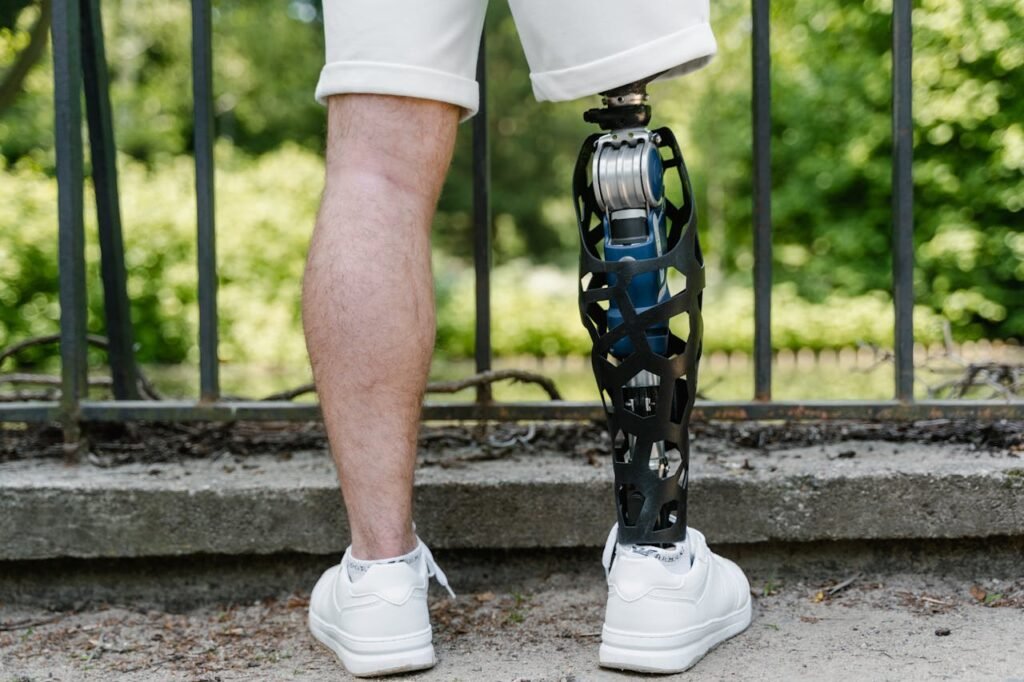
Supporting User Advocacy
Users of fashion-forward prosthetics often become powerful advocates for inclusion and representation. Businesses can support these advocates by providing resources, platforms, and opportunities to share their stories.
For instance, featuring users in ad campaigns, social media content, or educational workshops creates a sense of authenticity while inspiring others to embrace prosthetics as tools of empowerment.
Businesses can also collaborate with influencers who use prosthetics to reach broader audiences and normalize conversations around disability and self-expression.
Conclusion
Fashion-forward prosthetics are revolutionizing the way we think about assistive technology. By blending functionality with self-expression, these devices empower users to embrace their individuality and challenge outdated stereotypes.
They are not just tools for mobility—they are extensions of personality, creativity, and identity, redefining what it means to wear a prosthetic.
For businesses, this transformation presents an extraordinary opportunity to innovate, lead, and connect with users on a deeper level.
By prioritizing customization, embracing advanced technologies, and fostering inclusivity, companies can create prosthetics that resonate emotionally while delivering exceptional performance.
Beyond the products themselves, businesses can play a pivotal role in reshaping societal perceptions, promoting acceptance, and celebrating diversity through meaningful collaborations and community engagement.



